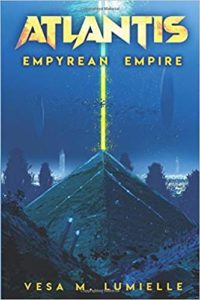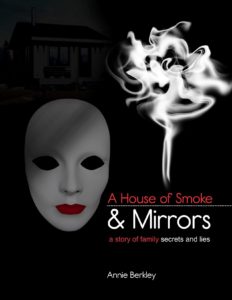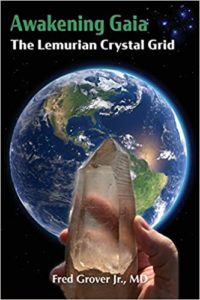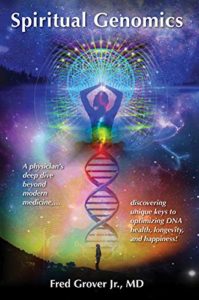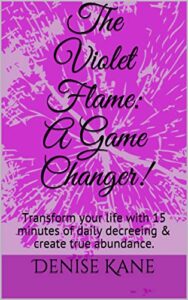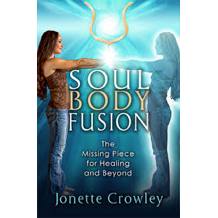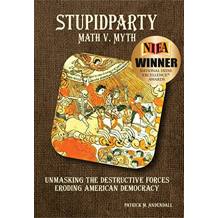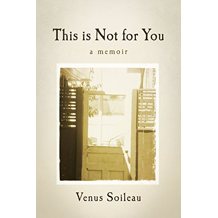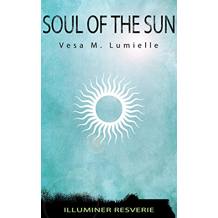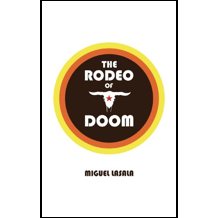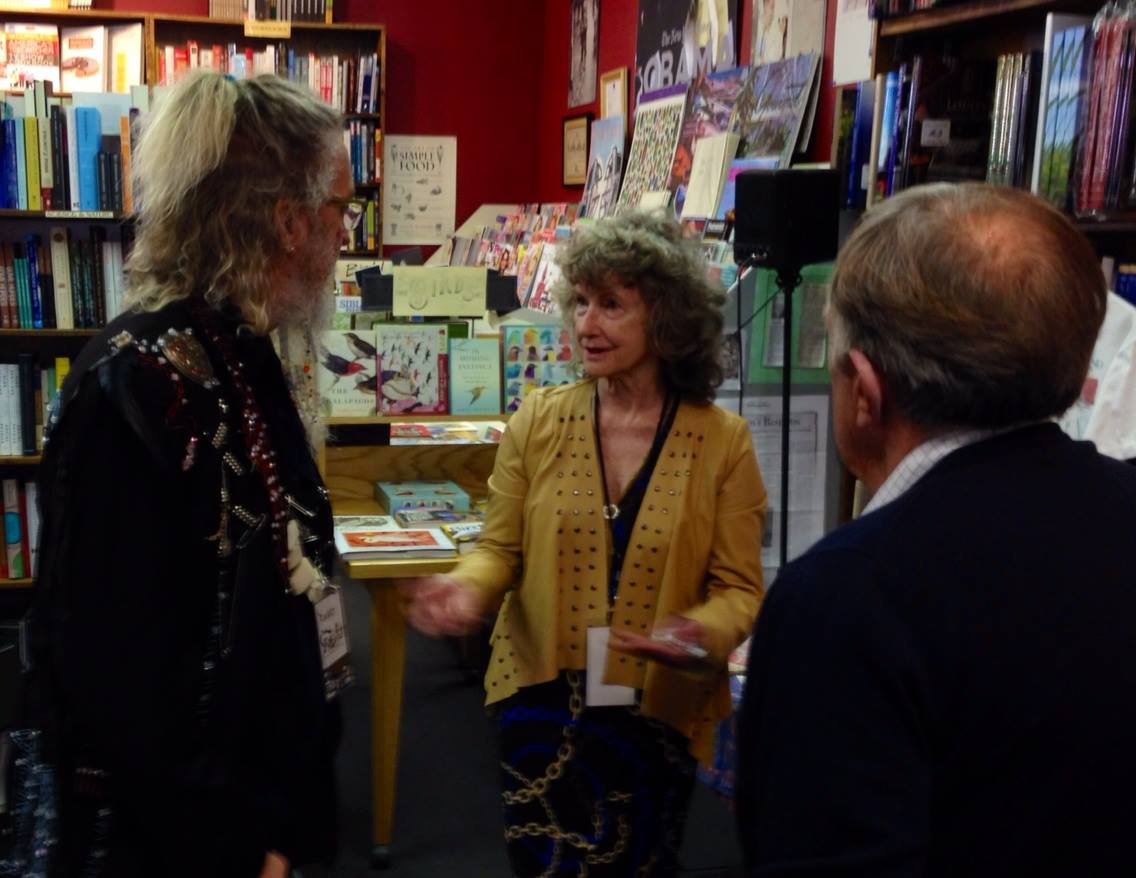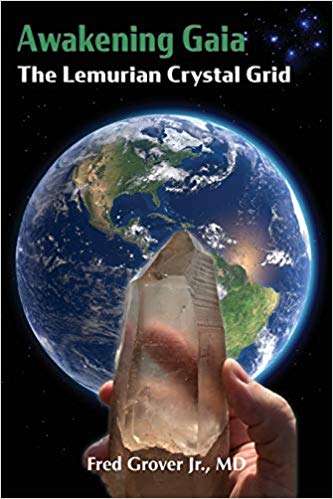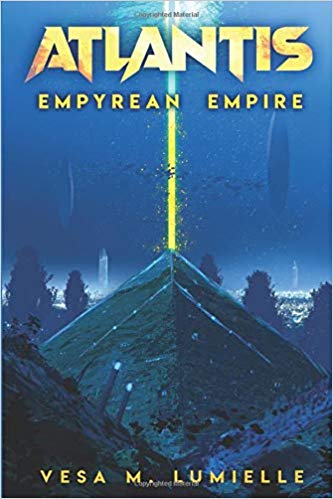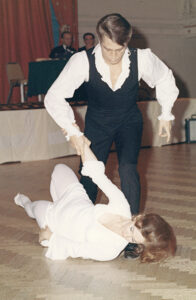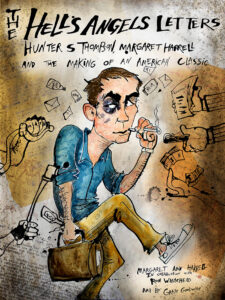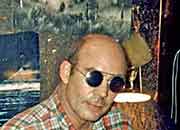—Behind The Hell’s Angels Letters
11, 12, 13
Palimpsest
Time with his old face
Death with his skull face
God with his No Face
Under my own face
—Milton Klonsky
What did William Blake have to do with The Hell’s Angels Letters book?
More than you might think. In my mind his artwork was the artbook I didn’t work on in 1971 or so. This was the artbook I did. It all went back to that.
But let’s take the story slowly.
1994. It was an unlikely event for me to be attending – called “Opening to Channel.” Living in Belgium, I had not had much experience personally with this more American practice in 1994. But I had just started taking light body experiential meditation work, which means getting to know the energy around you—your personal field—and from there subtle energy in general: how it works in us (somewhat in line with quantum theory but experientially). That’s where the first signal came that something was up about this book.
But maybe I should earlier, 1978. In the apartment of my close friend, a bit romantically, poet Milton Klonsky, whom Beat-generation author Seymour Krim described as having “an IQ that could stutter your butter.” Krim, by the way was a New Journalist, a “recorder of the scene as filtered through his intellect slanged vision.”[i] A fabulous author, he taught writing a Columbia and at Iowa, and received both a Guggenheim and a Fulbright. In this somewhat shabby rent-controlled one-bedroom apartment of Klonsky, a tall bookshelf richly filled almost a wall-to-ceiling of the living room. Among the signed copies, by friends, was one by poet Marianne Moore. There he sat, in his (somewhat shabby too) maroon or gray sweater, surrounded by plates: William Blake printing plates from the Tate Gallery in London. Klonsky and Blake were two deep eccentrics, except for all his mental travels Milton did not talk to spirits the way Blake did. He did, however, get so engrossed in his work it could be almost a trance. Telling me about the illustrated manuscript, Blake’s Dante, he was working on for Harmony Books, he said: “You do the text.”
What??!! Sputter. Sputter.
The text was brief or long blocks of commentary on Blake’s engravings of Dante’s Divine Comedy. About the most erudite thing I could imagine. Certainly not housed in my brain. Plus translated excerpts. Whoo. That meant having at my fingertips all of Dante’s Comedy, plus getting into Blake’s mind at the intersections. And I didn’t know Italian. I was awed. How could he think me capable of such expertise put together wittily? He said, “Come on. I’ll introduce you to the publisher of Harmony Books. I’ll get him to give you $1,000.” $4,821 today! Temporarily, I said yes, though I backed out when we returned from midtown, but I kept the memory. Including the awe.
Entering his apartment that afternoon now seems a kind of replica in astonishment of the opening pages of his American Review essay Art & Life: A Mennippean Paean to the Flea; or, Did Dostoevsky Kill Trotsky?—in which the natural philosopher Robert Hooke stared, in his dungeon laboratory in April 1663, as “out of the surrounding darkness” under his just-invented compound microscope he looked at a flea—“for the first time truly seen.” The flea was the carrier of the bubonic plague at the time, which he didn’t know.
Dazzled, my mind returned to Klonsky’s first Blake book: The Seer and His Visions. The erudition, the mix with street-talk, the brilliant colors and text-plus-image layout. It seered my awareness.
How does this connect to The Hell’s Angels Letters? It is one of the models underneath the book, a template peeping through, a palimpsest that started there. Or the start might have been—no, the pickup—my visit to Rome, to the da Vinci-inventions museum and the purchase of a book of illustrations/text of his imagined machines I stumbled on. Or my book of Michaelangelo’s paintings, or of my friend pop artist John (Jack) Wesley in New York. Or even, as while living in Belgium, I helped set up an exhibit for a museum, encountering their book Mozart in Belgium (in French).
Just as I began my first book by sitting in a Paris Montparnasse restaurant, Le Dôme, frequented in the past by Hemingway and Sartre, great writers and thinkers, painters, you name it, here was another, older flock of artists, this time visual, with texts digging into their great works. Sitting in that pond of art of the past ties in to The Hell’s Angels Letters, how? Underlying it in palimpsest mode. “Palimpsest,” a word I learned from Milton.
So let’s get down to it. At the channeling workshop in Ghent, Belgium, in 1994, I casually asked—in an exercise in twos—would my book be published? That is, Love in Transition: Voyage of Ulysses—Letters to Penelope, which I had worked on for nineteen years, unfinished because—what else?—of the death of Milton Klonsky (after whom my protagonist was named), after which he seemed to “come back from the dead” to initiate me. Are you following? There are a lot of winding trails like this leading up to the Letters.
The male in my Ghent channeling workshop answered, “I see a book by you in a bookstore window.” Wow.
A year later at the one hundredth-birthday celebration of the famous laboratory parapsychologist J. B. Rhine at the Parapsychology Association convention in Durham, NC, in 1995, I had been asked to contribute, as I had known and corresponded with Rhine—letters again—and while at an evening event there I asked a parapsychologist, who said she looked for lost children for the New York City police sometimes, the same question. “Will my book be published?” SAME ANSWER. Twice now: “I see a book by you in a bookstore window.” 1995.
Fast forward to 2014. It takes patience to follow how the Universe plants. The players are getting ready in the wings as I enter Carmichael’s Bookstore in Louisville and a friend says, “Look, Margaret, your book is in the window!” Not just one book, but my two memoirs, just published in 2011, 2012, with Hunter S. Thompson as a key character, at last. In Love in Transition it had been Milton whose strange embodiments I had “memorialized.” But here came Hunter.
There, before a sparse audience on a Sunday morning (!) with most all the Gonzo Fest attendees in bed, I gave my presentation of his letters to me, the originals carried inside the plane from NC to Louisville, Kentucky. Spreading the collection, worth tens of thousands of dollars, out, I enthusiastically elaborated, letter by letter. In the audience Jinn Bug, a poet/photographer/graphic artist and importantly for our story, one who could receive energy messages, sat transfixed.
“Remember the spaces,” Hunter had written me: it meant tell the Random House production crew of Hell’s Angels (the printer worked from the manuscript hard copy) to reproduce the space around his newspaper-width quotations. Exactly. That’s an order. In the talented Jinn Bug’s mind, a vision of an artbook, formed. First of all, it was unlikely she would even be there, not often stepping into the Gonzo world. But she did. And that proved vital.
“Remember the spaces” opened up before her into—what else in our scenario?—an ART book, say, like, The Gorgeous Nothings (Emily Dickinson’s scribblings on envelopes, surrounded by barrels of space). Now, Jinn and her husband, Ron Whitehead, the founder/organizer of the Gonzo Fest, who had invited me to speak, together approached me. I had sometime back decided to write no more books without being asked, so as to get readers, not just good critical reviews. Jinn conveyed her vision, intending her role to be then complete. I stood still, rooted to the spot, captured by the image of the artbooks of the past.
A couple of years passed. I did nothing. How could I without my layout templates? Jim Bug had no interest in creating any templates, even one. But reluctantly, one day, hurrying down the airport corridor with me, she relented. (Probably to keep me interested.)
Now the winding trail wound into new corners. Keeping the waning project alive, investing it with dynamite, though so far not a single step in it had been taken, one day Jinn Bug got the idea of inviing in in Ron and Juan Thompson. She broached the idea. I said yes. They said yes. Juan’s entry miraculously guaranteed that the reprint permissions from the Estate.
Without Juan’s nod and generosity, no book.
And everyone felt the book was Hunter’s wish!
The ducks were in a row. But another year passed. I was still in that living room of Blake’s plates from the Tate Museum, or in Leonardo’s book of drawings with text, waiting for my template, the palimpsest of art books in the past standing with me. My stuck brain thought of no one to ask for templates, not yet even thinking of going to a designer. That would have been the obvious act. But I knew no Gonzo-inspired designer. And I wanted text and template to go hand in hand.
Finally, Jinn and Ron said it was time for the editing—in the form of questions. That meant I had to write text, which was actually easy, given the familiarity I now had with the topic. Immediately, Jinn began drawing my own personal story into the book, where I had not planned on including it much. To bring me in, to widen the audience outside Gonzo, was her idea. Also, that I answer questions in written form in back-of-the-book Notes. Notes to be deleted later.
Then Ron announced he had a narrow opening to read the manuscript in six weeks. Could I be ready? Jinn added: forget waiting for the templates, she and Ron would drag text from my manuscript under and beside each illustration. All they needed was the text to drag, let them choose which. Wow. My heart dropped to the floor. My first reaction was, what a lot of trust that required of me, introvert that I was (extrovert in some ways too). But trust I had (the extroverted me) and in fact wasn’t this a collaboration? I said yes.
Also, they both insisted I leave excess material in for them to see. This required to restrain me in chains, as it were. I, of all people, identified myself by my ability to cut. One author I edited called me “scizzors lady.” How ironic. Because 1) I am an expert in cutting. It was like a trademark, my TM. A footprint of me.
I remember (painfully but gratefully) a lesson—shortcut—from Alan Rinzler, one of Hunter’s editors, who around 2009 read my memoir Keep This Quiet! in manuscript when what would become the first two volumes were still one long text. He berated the excess “ephemera.” Yes! My intuition had already told me that. So I raced through the book, cut one third, slashing away as in an overgrown vacant lot, without a glance backward, with nary a pittance of regret. This sealed the deal for me to always listen to my own intuition at a certain point—siding with it, as it nodded vigorously, if needed.
Now, with trust, trepidation, gratitude and curiosity as well, I turned in the text—at the very same time the Universe granted Ron an artist-in-residence assignment in Estonia, alone! No sooner had I turned it in than off he went.
Well, he would not back out, he soon informed me. He would edit it there, but what would happen to the plan? Unbeknownst to me he knew nothing about the plan.
So he received a text with no chapters, thus no chapter openings and closings. Now, those are a fabulous tool I refresh myself on in bedtime mystery novels nightly. But this manuscript had no chapters, because (I thought) he was now to “place” portions of text under and around and in between the illustrations! Ron didn’t know! And I didn’t know he didn’t know. As I had only seen him a few times in person and found him rather intimidating (I admit), we had had no long phone conversations (a difficult feat in itself, as he is like a fire hydrant, the words pouring over each other).
I said, “Ron, cut anything—a paragraph, a page, a section—move paragraphs around. But please just do no line editing.
He said, “Thanks. Good to know. OK.” End of instructions.
That was the extent of the communication, except he repeated I was not to cut excess material, as he needed to see it to decide if it belonged in or not (not, definitely!).
So over in Estonia he weighed, wrestled, wondering how the text could be made “conversational,” he later said. I now know he must have meant to deemphasize any hint of anything academic. That was fine with me. A good idea.
I didn’t mention the plan that he and Jinn—now himself alone—were to drag and cut and paste my text under and beside and between illustrations. I mistakenly just assumed he had been told. Possibly Jinn thought I told him. Or that, no matter, it would all fall into place. (Which it did.)
Regardless, he sweated, then returned the manuscript with no markings. Just the finished product. A clean text. No questions. I looked. YES. As if my mind had been glued to his (and perhaps it was), he 100 percent agreed. Eye to eye. He deleted everything I’d shuddered at leaving in. And left in what I loved. Talk about mind meld.
But Ron was now emailing out the text for early reading. Ye gods! I hastily made chapters – with openings and closings created for dramatic effect. And by luck found designer Deborah Purdue to do Sample Pages. She just fell out of the sky. Deborah happened to live in Medford, Oregon, I soon realized—the headquarters of my light body work, from whence the Opening to Channel workshop had stemmed.
So now we entered the Art Book arena—layout, color, design fantasia. And lo and behold, as the self-organizing Universe would have it, it fell to me to drag and place the text! We were off to the races.
In the next year, in combing through agent options, I butted against my karma. I reached the spot where with earlier books I would give up. Was it karma? I began to think so. A stone wall I had to blast through. Ron masterfully pushed me, always upbeat, past every rejection letter.
Ron said, “No, keep going.” Jinn: “I think there’s a publisher out there.” What? I believed in her hunches.
And lurking in San Francisco, a needle in a haystack, he was.
(If you do not understand why the book was noncommercial, just imagine the cost of color printing. For sure, traditional publishers would, cost effectively, destroy the whole purpose of the project, by retyping, in black and white, excerpts of letters. Excerpts only. No scans. No primary documents on display, no doodles, no color. No coffee table book. Keep This Quiet! all over again. Why bother? No dice. Imagine the yawning of the Gonzo community!)
Grant Goodwine, the perfect illustrator, came in.
One year later in a phone call magic happened. I thought I was dialing a printing house to test what the color printing fee (in any case unaffordable by me; still, it didn’t hurt to ask) would be.
But the printer had a publishing arm. I’d dialed that by accident; by chance he himself picked up. He interrupted: “I’m the publisher of Norfolk Press. I want to publish your book. Do you have a manuscript?” And that was it. Next day, a contract waited. The book would come home to roost in San Francisco. Ah ha. Home to where Hunter typed the very first letter to me. Closing the circle.
But that wasn’t the last hurdle. I signed in March 2020. COVID lurked. Frowning and forbidding. We got the book out July 18, 2020—no launch allowed.
However, then another hurdle, another karmic stop, as it were, remained. This one still in effect. Will this roadblock get lightly lifted as well? A proud, open highway? The hurdle now is how readers can get the book—available on just the publisher’s website. Ever mindful of dropping hints, the Universe showed its hand here too. An Amazon distribution center popped up right outside the Norfolk Press window—in 2021, saying: See how accessible I am. Take the leap! Charles Cunningham, the insightful, risk-taking publisher, noted the “hint.” But didn’t budge. Yet. Then one day Fat City Gallery, run by DJ Watkins out of Aspen, offered to put the book up on its site for sale. Ah ha. Another surprise in store. Moving now to Aspen, just miles from Hunter’s Woody Creek home. Are we tracing a trajectory on a map?
As we started with Blake, I think of the plots of the Universe: After his exile from Florence, “poet and politician Dante Alighieri . . . wrote his masterpiece, The Divine Comedy, as a virtual wanderer, seeking protection for his family in town after town.”[ii]
The Gospel of Thomas: (29) “Jesus says: “If the flesh was produced for the sake of the spirit, it is a miracle. But if the spirit . . . for the sake of the body, it is a miracle of a miracle.”
That is, this winding road is the path of the art of old. Hunter won fame. Celebrity. Notoriety. But for a taste of the “old way,” this might round out the picture. Michaelangelo was enormously wealthy. But most artists were not.
I cannot thank Ron enough for pushing and pushing, never washing his hands of this project. Ron always available to give his suggestions, out of years of experience. Quick, unhesitant. If I would doubt, the solution was: Ask Ron. Quick, snap of the finger, he fired back. And I would go back now to nod at my first publisher, Didi Cenuser, in Romania, as he appreciates being remembered. Who could forget him? Jinn Bug, of course, for capturing several Universe messages during this long journey, without which I don’t think the book would exist. Thanx, one and all.
To Be Continued.
[i] https://www.beatsupernovarasa.com/thebeats/thebeats.htm
[ii] https://www.history.com/this-day-in-history/dante-is-exiled-from-florence
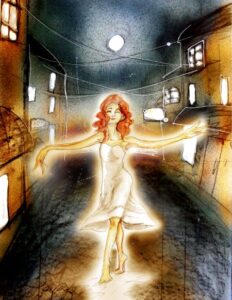 Let’s dive down into our relationship to the universe’s creative impulse, creative energy—the energy that can move mountains, can explode cities— through our common affinity for and content of . . . ELECTRICITY. Electricity “Transport Trains” presents “some personally experienced secrets of how we get roped into the universe’s scenes and stories.” Margaret A. Harrell spent the decade of the 1990s at her computer, but it was no ordinary experience. The computer worked with her, in what is called “computer PK.” In this parapsychological phenomenon, the computer repeatedly restructured portions of a whole page of text that was on-screen, reducing it to mouthfuls. No page printed the same way twice. This was a collaborative experience between artist and, if you will, spirit illustrator (humorously put). With piles of examples of this type of refocusing, not only did she have her consciousness altered and expanded, but she used the illustrations in her Space Encounters series, some of which are reproduced in Electricity “Transport Trains.” The Space Encounters series was published in Romania while she lived in Belgium. Resurfacing out of this ten years of seclusion and artistic hermitage in 2001, she relocated in the United State with a shipping container that held many examples of this nonstop ten years of creativity, all supported, or instigated, by “the spirit world.” Blinking in the light of returned-to everyday reality, she published more books, but shifted focus. Now she is aiming for short, easily accessible, entertaining books that have a very deep undertone. In addition, she brings insights into how human electricity interacts with the electricity-filled universe that she learned but did not understand in an initiation in 1985. Decades later, it’s all so clear. And she shares it in this book.
Let’s dive down into our relationship to the universe’s creative impulse, creative energy—the energy that can move mountains, can explode cities— through our common affinity for and content of . . . ELECTRICITY. Electricity “Transport Trains” presents “some personally experienced secrets of how we get roped into the universe’s scenes and stories.” Margaret A. Harrell spent the decade of the 1990s at her computer, but it was no ordinary experience. The computer worked with her, in what is called “computer PK.” In this parapsychological phenomenon, the computer repeatedly restructured portions of a whole page of text that was on-screen, reducing it to mouthfuls. No page printed the same way twice. This was a collaborative experience between artist and, if you will, spirit illustrator (humorously put). With piles of examples of this type of refocusing, not only did she have her consciousness altered and expanded, but she used the illustrations in her Space Encounters series, some of which are reproduced in Electricity “Transport Trains.” The Space Encounters series was published in Romania while she lived in Belgium. Resurfacing out of this ten years of seclusion and artistic hermitage in 2001, she relocated in the United State with a shipping container that held many examples of this nonstop ten years of creativity, all supported, or instigated, by “the spirit world.” Blinking in the light of returned-to everyday reality, she published more books, but shifted focus. Now she is aiming for short, easily accessible, entertaining books that have a very deep undertone. In addition, she brings insights into how human electricity interacts with the electricity-filled universe that she learned but did not understand in an initiation in 1985. Decades later, it’s all so clear. And she shares it in this book.![Cloud Conversations & Image Stories - Leonardo's Theory: Pictorial Consciousness by [Margaret Harrell]](https://m.media-amazon.com/images/I/41dqImFkaQL.jpg)
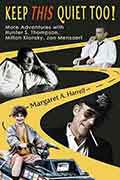 Just landed on New York City soil, for a brief stopover in New York, where did I go? Of course, unannounced, my feet took me down to West Fourth Street in the Village, walking the entire distance from midtown, telling myself I didn’t know where I was walking to. Of course, I knew. To Milton’s for my yearly indispensable feasting on his witticisms and steely analysis of whatever current predicament I found myself in in my marriage. His advice might be, when I bemoaned Jan’s suicidal tendencies,”Give him something to rise to. . . Or go down with him. But don’t be a bystander while this man commits suicide.” Never, that is, be a bystander in your life. Plunge into it. I always felt ten miles high, like Alice, after listening to such talk from an insider, who knew life through and through. And had the soul of a guru. With Hunter the attraction was something else. But deep and strong – and necessary – it was. And we often caught up on these trips to the States. Then back to Morocco, to my primitive sunny lifestyle there. Temporary, I always knew. But temporary was lonjg. Fourteen years of Oum Kalthoum, and Jacques Brel, and of course Mozart, all Jan’s favorites. And I forget Piaf.
Just landed on New York City soil, for a brief stopover in New York, where did I go? Of course, unannounced, my feet took me down to West Fourth Street in the Village, walking the entire distance from midtown, telling myself I didn’t know where I was walking to. Of course, I knew. To Milton’s for my yearly indispensable feasting on his witticisms and steely analysis of whatever current predicament I found myself in in my marriage. His advice might be, when I bemoaned Jan’s suicidal tendencies,”Give him something to rise to. . . Or go down with him. But don’t be a bystander while this man commits suicide.” Never, that is, be a bystander in your life. Plunge into it. I always felt ten miles high, like Alice, after listening to such talk from an insider, who knew life through and through. And had the soul of a guru. With Hunter the attraction was something else. But deep and strong – and necessary – it was. And we often caught up on these trips to the States. Then back to Morocco, to my primitive sunny lifestyle there. Temporary, I always knew. But temporary was lonjg. Fourteen years of Oum Kalthoum, and Jacques Brel, and of course Mozart, all Jan’s favorites. And I forget Piaf.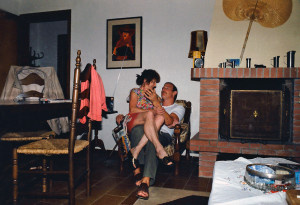
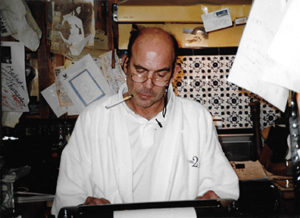
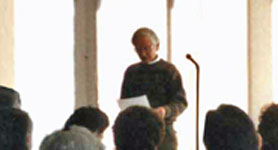
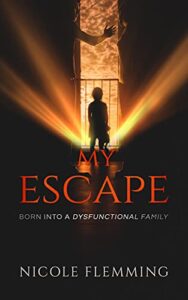

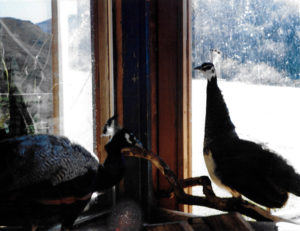

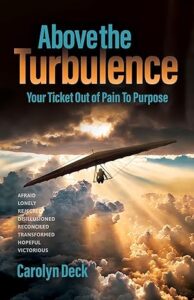
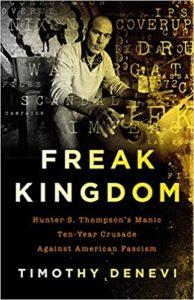
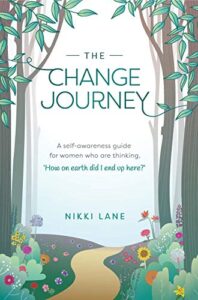 I’ve just finished editing my book with Margaret Harrell. She has been absolutely amazing. She has turned my waffle into short sharp punchy sentences that gets the message across clearer than I could have ever imagined AND reduced my word count by about 8,000 words. After one zoom call, she understood what I was wanting to achieve, gave me constructive feedback and allowed me the space to re-create areas of my book that weren’t working. I’m so happy with my end result. Margaret’s expertise and experience are clearly extensive and I’m so glad she was able to work on my book. Margaret . . . thank you, thank you, thank you!!!!
I’ve just finished editing my book with Margaret Harrell. She has been absolutely amazing. She has turned my waffle into short sharp punchy sentences that gets the message across clearer than I could have ever imagined AND reduced my word count by about 8,000 words. After one zoom call, she understood what I was wanting to achieve, gave me constructive feedback and allowed me the space to re-create areas of my book that weren’t working. I’m so happy with my end result. Margaret’s expertise and experience are clearly extensive and I’m so glad she was able to work on my book. Margaret . . . thank you, thank you, thank you!!!!